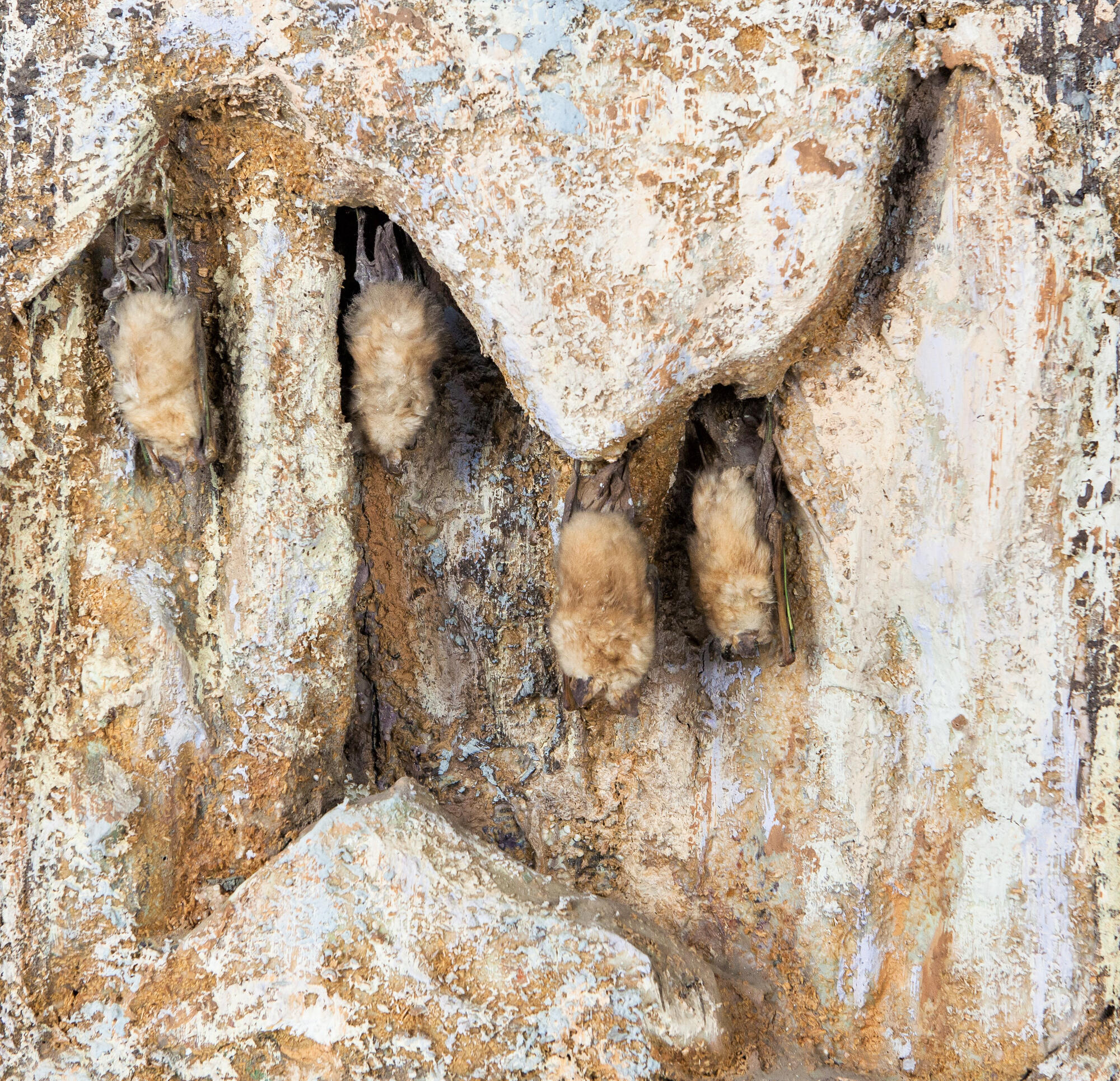Bats are wing-handed animals, the only order of mammals that can fly. Most bats prey on insects, and only a few species found in South America feed on blood — they are called vampires.
The metabolism of bats is high, so they need to eat up to 500–600 insects per hour. They mainly feed on insects, including those that harm agriculture. Bats begin to hunt after sunset.
To conserve energy during flight, bats fold their wings with each flap. For this reason, they do not fly in the rain: folding wet wings is too inconvenient and energy-intensive.
Bats use echolocation for orientation in the air. They emit ultrasonic signals–high-frequency sound waves that a person cannot hear. The ultrasound is reflected from the object, and the large ears of the animal catch it. With the help of echolocation, bats are able not only to notice stationary objects, navigate airborne and grab insects on the fly but also communicate with each other.
During the day, bats hide in shelters. Some tropical species form grandiose clusters of up to tens of thousands or even millions of individuals during the day’s rest.
Many temperate region bats fly south before winter comes, like migratory birds. However, some species hibernate in the same places whbhere they spend the summer or wander to wintering places located closer.
In winter, bats hibernate. This helps them to survive the time when the main food, insect, becomes unavailable.
Bats begin to prepare for hibernation in autumn: they actively fly and gorge themselves. When the air temperature drops and the humidity changes, they gather in a colony from a dozen individuals to a thousand or even more and begin to seek shelter. But there are species, that hibernate alone, for example, long-eared bat and northern brown bats.
A biogroup is presented in the Biology museum — a small colony of sleeping bats. Clinging with their paws and covering themselves with large wings, they hang upside down in their shelters.
The duration of hibernation in most species is 2–2,5 months. But some sleep for up to 8 months, for example, common bat. The duration of winter sleep in bats depends on the parameters of air temperature and humidity.
The metabolism of bats is high, so they need to eat up to 500–600 insects per hour. They mainly feed on insects, including those that harm agriculture. Bats begin to hunt after sunset.
To conserve energy during flight, bats fold their wings with each flap. For this reason, they do not fly in the rain: folding wet wings is too inconvenient and energy-intensive.
Bats use echolocation for orientation in the air. They emit ultrasonic signals–high-frequency sound waves that a person cannot hear. The ultrasound is reflected from the object, and the large ears of the animal catch it. With the help of echolocation, bats are able not only to notice stationary objects, navigate airborne and grab insects on the fly but also communicate with each other.
During the day, bats hide in shelters. Some tropical species form grandiose clusters of up to tens of thousands or even millions of individuals during the day’s rest.
Many temperate region bats fly south before winter comes, like migratory birds. However, some species hibernate in the same places whbhere they spend the summer or wander to wintering places located closer.
In winter, bats hibernate. This helps them to survive the time when the main food, insect, becomes unavailable.
Bats begin to prepare for hibernation in autumn: they actively fly and gorge themselves. When the air temperature drops and the humidity changes, they gather in a colony from a dozen individuals to a thousand or even more and begin to seek shelter. But there are species, that hibernate alone, for example, long-eared bat and northern brown bats.
A biogroup is presented in the Biology museum — a small colony of sleeping bats. Clinging with their paws and covering themselves with large wings, they hang upside down in their shelters.
The duration of hibernation in most species is 2–2,5 months. But some sleep for up to 8 months, for example, common bat. The duration of winter sleep in bats depends on the parameters of air temperature and humidity.



